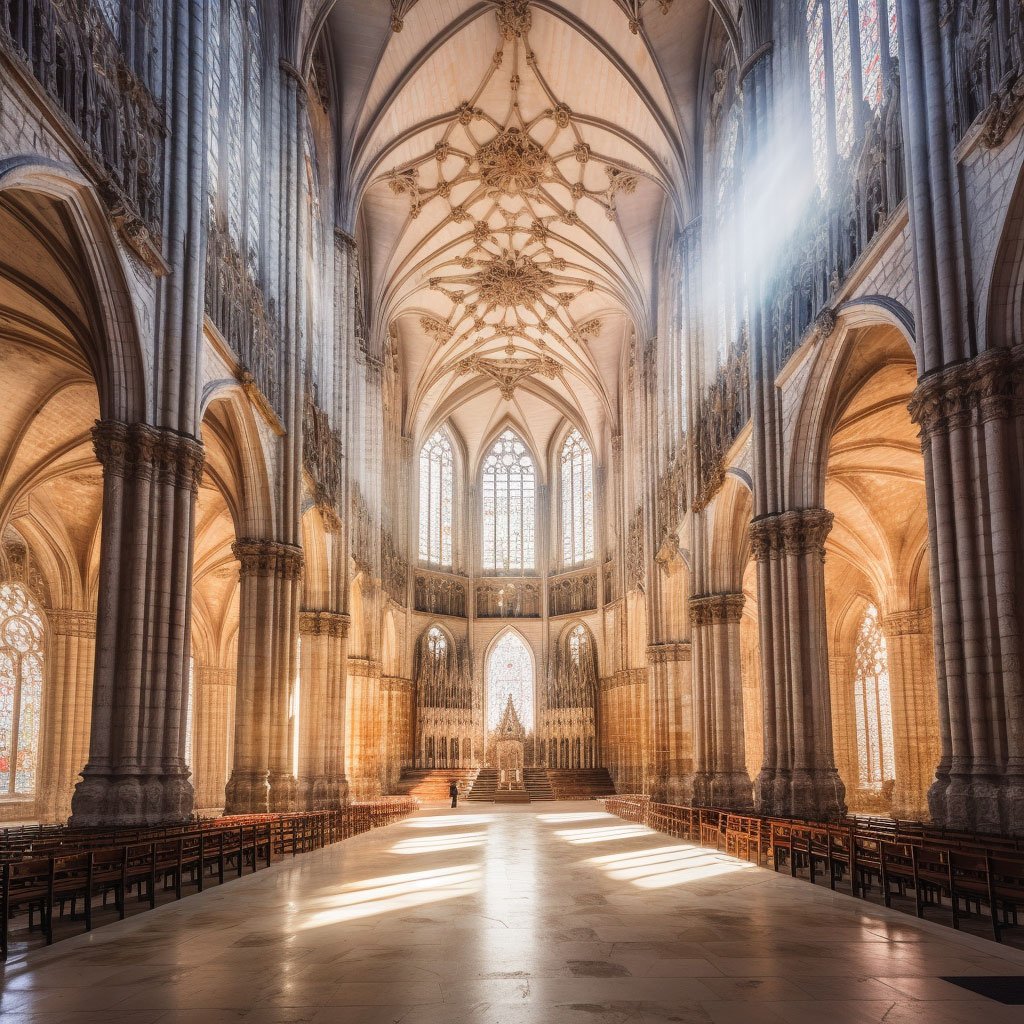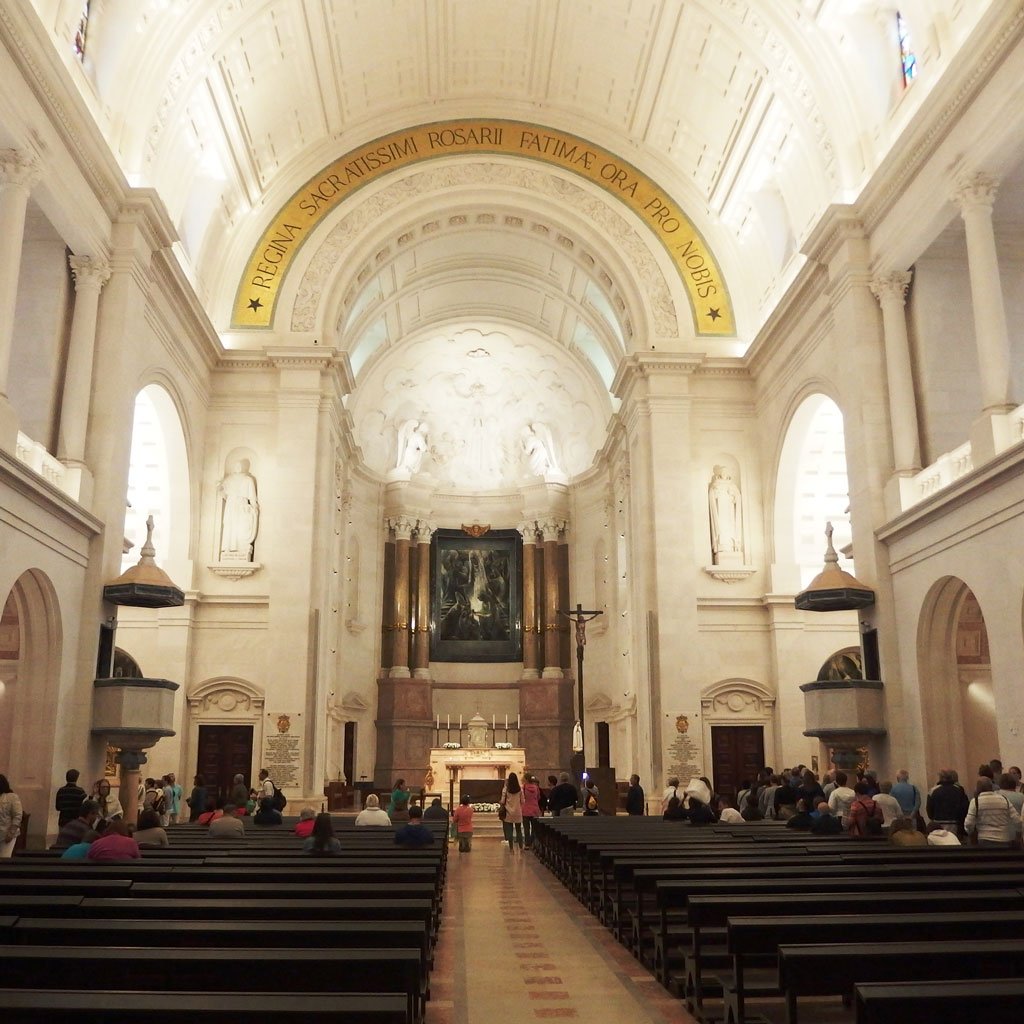Welcome, dear reader, to a journey through the sacred spaces of Portugal. This country, steeped in religious history and tradition, is home to numerous shrines, monasteries, and convents, each with its unique story and spiritual significance. From the world-renowned Sanctuary of Our Lady of Fátima to the architectural marvel of the Monastery of Batalha, Portugal offers a rich tapestry of religious experiences. So, let’s embark on this spiritual journey and explore the religious heritage of Portugal.

Sanctuary of Our Lady of Fátima
Our journey begins in Fátima, a small town that has become one of the world’s most important Catholic pilgrimage sites. The Sanctuary of Our Lady of Fátima, also known as the Basilica of Our Lady of the Rosary, is a place of devotion and prayer, attracting millions of pilgrims each year.
The sanctuary was built on the site where three shepherd children reported seeing apparitions of the Virgin Mary in 1917. The children, Lucia, Francisco, and Jacinta, were later canonized by the Catholic Church, and their story has inspired pilgrims from around the world to visit Fátima.

As we explore the sanctuary, we are struck by the sense of peace and reverence that permeates the place. The white marble basilica, with its towering colonnade and impressive dome, stands as a testament to the faith and devotion of the pilgrims who visit Fátima.
Monastery of Batalha
From the serene atmosphere of Fátima, we journey to the town of Batalha, home to one of Portugal’s most impressive architectural treasures – the Monastery of Batalha. A UNESCO World Heritage site, the monastery is a masterpiece of Gothic and Manueline architecture.
The Monastery of Batalha, also known as the Monastery of Saint Mary of the Victory, was built to commemorate Portugal’s victory over Castile at the Battle of Aljubarrota in 1385. The victory secured Portugal’s independence and marked the beginning of a period of prosperity and expansion known as the Age of Discoveries.

As we explore the monastery, we marvel at the intricate stonework, the soaring arches, and the delicate filigree of the cloisters. The monastery is a testament to the skill and creativity of its builders, and a symbol of Portugal’s rich religious and cultural heritage.
But the Monastery of Batalha is not just an architectural marvel. It is also a place of spiritual significance, a place of prayer and reflection. As we walk through the quiet cloisters, we can feel the centuries of devotion that have imbued this place with a profound sense of peace.
Convent of Christ in Tomar
From the Gothic grandeur of the Monastery of Batalha, we journey to the town of Tomar, home to the Convent of Christ. A UNESCO World Heritage site, the convent is a unique blend of architectural styles, reflecting the various periods of Portugal’s history.
The Convent of Christ was originally built as a stronghold for the Knights Templar in the 12th century. After the dissolution of the Templars, the castle became the headquarters of the Order of Christ, which played a crucial role in Portugal’s Age of Discoveries.

As we explore the convent, we discover a fascinating mix of Romanesque, Gothic, Manueline, and Renaissance architectural elements. The centerpiece of the convent is the Charola, a round church that was originally the Templars’ oratory. With its richly decorated interior and its stunning frescoes, the Charola is a testament to the artistic and spiritual aspirations of its builders.
But the Convent of Christ is more than just an architectural marvel. It is a place of historical and spiritual significance, a place that has witnessed centuries of religious devotion and has played a crucial role in Portugal’s history.
Jerónimos Monastery in Lisbon
Leaving the historic town of Tomar, we journey to the vibrant city of Lisbon, where we find the Jerónimos Monastery. This magnificent structure is one of the most prominent examples of the Manueline style of architecture, which is characterized by ornate and intricate detailing.

The Jerónimos Monastery, also known as the Hieronymites Monastery, was commissioned by King Manuel I in 1501 to commemorate Vasco da Gama’s successful voyage to India. The monastery was built near the site where da Gama and his crew spent their last night in Portugal in prayer before departing for India.
As we wander through the monastery, we are struck by the detailed carvings that adorn the cloisters, the grandeur of the church, and the peaceful atmosphere that pervades the complex. The monastery stands as a testament to Portugal’s Age of Discovery and its deep religious faith.
Conclusion: A Journey Through Faith and History
Our pilgrimage through Portugal’s religious heritage comes to an end, but the impressions they leave are lasting. From the serene sanctuary of Fátima to the architectural marvels of the Monastery of Batalha and the Convent of Christ, we’ve discovered a country deeply rooted in faith and history.
Our journey has taken us through centuries of religious devotion, architectural innovation, and historical events that have shaped Portugal’s identity. We’ve walked through sacred spaces, marveled at architectural masterpieces, and felt the profound sense of peace that these places inspire.

But our journey does not end here. Portugal’s religious heritage is vast and diverse, and there are many more sacred spaces to explore. From the ancient cathedrals of Braga and Coimbra to the chapels and shrines that dot the countryside, each place has its unique story and spiritual significance.
As we conclude our journey, we invite you to continue exploring, to keep seeking out the stories that these sacred spaces tell, and to let the beauty and tranquility of Portugal’s religious heritage inspire your own journey of faith and discovery.
